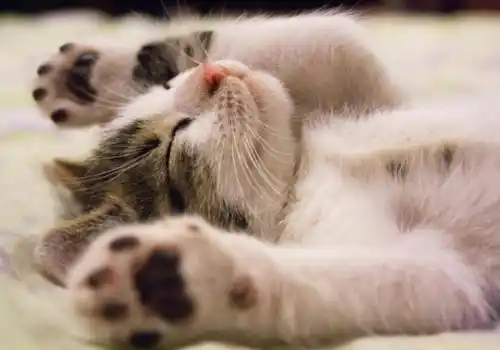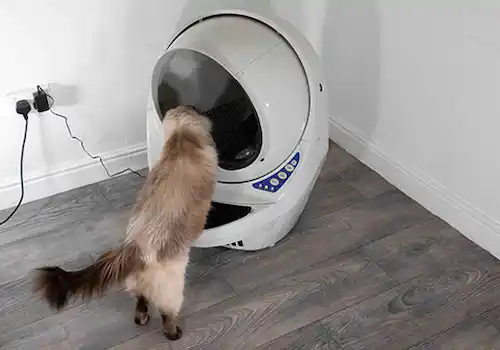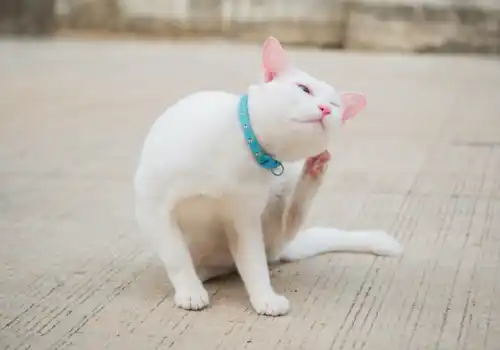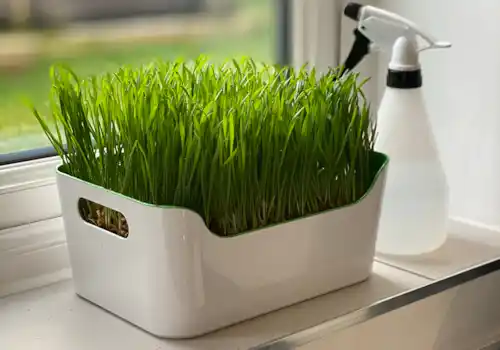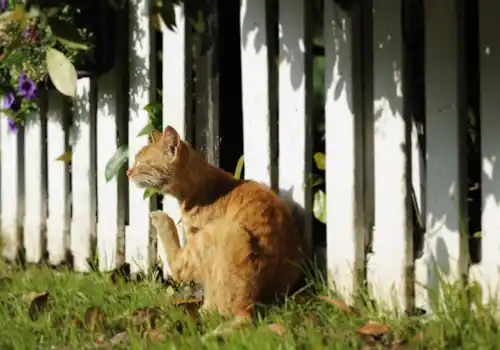Playing with your cat can be a fun and fulfilling time for both of you. Clare Hemington shows you how to make the most of this time.
As far as I’m concerned, there are three types of cats in this world: Those who really enjoy human company, those who merely put up with us, and those who run a mile when they see us approaching, no matter how quietly on our tiptoes we try to walk.
If your cat is in the first category, you might enjoy a relationship that consists of an abundance of mutual love and constant cuddles. In fact, as I write this, Billy is cradled in my lap displaying all the signs of utter contentment.
The cats in the second category can take you or leave you, depending on what you happen to be doing with them at the time. If food is involved, they’re suddenly your best friend, but otherwise make it perfectly clear that any kind of physical contact is not at the top of their priority list.
It goes without saying that the final category of cats is the trickiest to deal with. These cats might not have received appropriate socialisation to people when they were kittens, in which case, we’re all just big and scary; they may have been treated poorly or may simply be genetically timid. And unless we can gain their trust, it’s going to be difficult for us to offer them a home in which they can truly thrive.
Play for all
Whatever category your cat falls into, I can say with certainty that they will all appreciate you taking the time to play with them.
In this article, I’ll be taking a practical look at how you can use play to strengthen the bond with an existing feline family member or create a bond with the new cat in your life.
A new cat
So, let’s start at the beginning. If you have just acquired a new cat, be it a kitten or an adult cat, chances are he will be feeling some degree of anxiety.
He might even decide to take cover under the bed and not come out for days on end. In this type of situation, using a combination of treats and play are going to help bring him out of his shell — and his hiding place.
Using a fishing rod toy to play with him remotely is very important as it allows you to keep your distance and give him a sense of control over the interaction. It’s also a good idea to try to not focus on him during the session as he might view this as threatening. Instead, you can jiggle the toy in and around the area where he’s hiding while your focus is on the TV, your phone, a magazine, or book. You can always take a peek at him out of the corner of your eye to check his progress.
As he grows more confident, you can trail the toy closer to you while offering treats as an additional incentive. This may take time and perseverance depending on how anxious your cat is to start with but gradual exposure to you through play is incredibly important to help him build his trust in you and create a good foundation for a flourishing relationship.
Or perhaps you have a cat that doesn’t interact with you as much as you’d like, or one that wants too much of your time and attention. In these instances, play can be used to redefine your relationship, making it stronger and healthier.
So, let’s take a look at how you can optimise your play sessions to get your cat really engaged with the game.
When should I play with my cat?
We all lead busy lives so playing with your cat often happens whenever you’re able to fit it into your schedule, which could well be at different times each day. Cats, however, are creatures of routine and appreciate knowing what activities are going to happen and when.
If you try to play with them mid-afternoon, you might be disappointed at their lack of interest, or even put it down to them not being very play orientated. What is more likely is that they have set this time aside for one of their many daytime naps. Don’t forget, by nature, cats are nocturnal, as any of you who get woken up during the night by a cat clumsily clambering all over you will testify. So ideally, playtimes should happen to coincide with their own natural body rhythms. I’m not suggesting you stay up all night just to play with them, but first thing in the morning and later in the evening are usually when you can catch them at their most active and when they’re more likely to engage in play. If you have a cat that actually initiates play with you, be sure to reward this trust by responding to their request!

Moving fishing rod toys unpredictably will excite a cat.
Q) How often should I play with my cat?
A) A good rule of thumb is to try to have at least two play sessions a day with your cat. If weekends afford you more time, then perhaps you can add an extra one or two!
Q) How long should I play with my cat for?
A) I’m often told by clients that their cats don’t seem to like playing for long. When I ask them how long their sessions are, the answer is usually somewhere between 15 and 30 minutes. While kittens and cats with a high play drive might respond to longer sessions, play has the most beneficial effects if it’s provided in shorter, more frequent energetic bursts of activity. Waggling a toy mouse in front of your cat for 30 minutes isn’t nearly as exciting as several five-minute sessions with a fishing rod toy that they can run around after and leap up to catch the toy on the end.
Q) What toys should I use?
A) There are literally thousands of cat toys on the market, so I’ll be devoting an entire article to this subject later in the series, but the short answer is to either use a toy that you know your cat already responds to or be prepared to experiment!
Every cat has their own unique preferences when it comes to toys and the types of game he most enjoys. Some love playing with toys that they can chase and jump up at, while others enjoy fetching toys.
I’ve already mentioned fishing rod toys and these appear to be universally enjoyed as they allow cats to perform the behaviours they use in hunting while literally keeping them at arms-length and preventing any of your limbs being mistaken for prey!
Sometimes play sessions might not involve the use of toys at all. For cats that are very people orientated, such as Siamese, a game of hide ‘n seek might be more exciting than anything else. This is the only type of play that my Siamese cat Billy will entertain!

Some cats enjoy fetching toys.
Q) Is there a right way to play with cats?
A) You’re trying to enjoy a lovely play session with your cat, but no matter how enthusiastically you waggle the toy around, your cat appears disinterested. This is probably because, as far as your cat is concerned, your waggling method leaves a bit to be desired. Remember, cats are ‘stalk-and-rush’ hunters and are much more likely to engage if you manipulate their toys in a way that simulates the movements of their prey in the wild such as mice and birds.
Try moving the toy unpredictably. For example, you can trail it along the floor for a short distance then stop the movement and keep it still for a few moments. You can suddenly change the toy’s direction, move it slowly then quickly, allow it to fly briefly, then trail it along the floor.
You can also put the rod end of a fishing rod toy under a rug or other object, with the end peeking out. Pull the rod back so that the end is hidden, then expose it to your cat and vary the lengths of time he can see it. Using toys in this way will fire up all your cat’s senses and get him stalking, pouncing, and much more mentally engaged with the game.
A word of warning: if you think that playing with your kitten with your hands will help create a stronger bond between you, then think again. Using your hands and feet as toys will ensure that your kitten views them as prey when he’s all grown up and when his teeth and claws are bigger and sharper.
Q) What if I have more than one cat?
A) Take care to ensure that each of your cats’ play needs are met. They’re all individuals and might require different types of play and different toys. Some might be happy to play in the presence of their feline housemates, but others might only enjoy playtime if they’re on their own with you. The more cats you have, the more time this will take, but hopefully it will be time enjoyed by you all!

Trying to play with a cat who is snoozing is unlikely to be successful.
Finally, don’t forget that you can also use play to strengthen the bond between you and a senior cat or one that has disabilities. You will just need to figure out what they enjoy and what they are capable of. Whatever the temperament, age, or physical ability of the cat in your life, you can be sure that playing with him every day will be a fun, rewarding, and bonding experience for you both.

